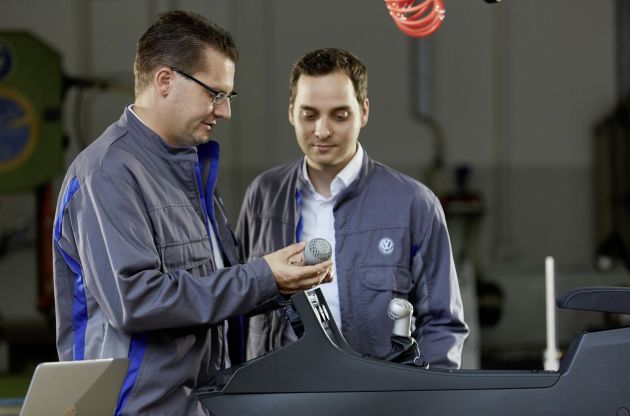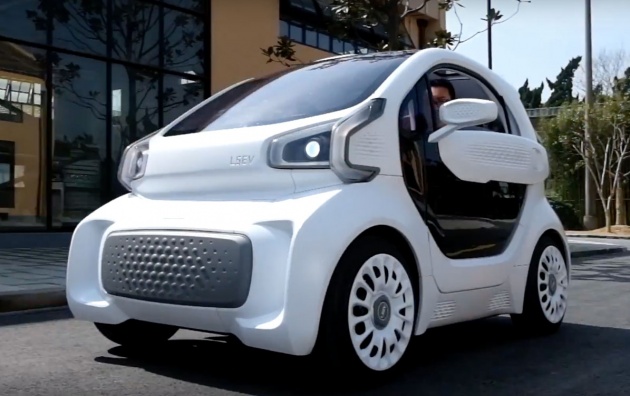It appears that Volkswagen has found a new way to incorporate three-dimensional printing technology into its operations – to mass produce car parts. Together with Hewlett Packard (HP) and GKN Powder Metallurgy, the three entities have developed the HP Metal Jet process that’s said to increase printing productivity.
The biggest advantage of HP Metal Jet is that productivity is up by 50 folds compared to other 3D printing methods, depending on the component. Volkswagen claims that with this tech, 3D printing is mass production-ready in the automotive industry. The partners recently presented the new process for the first time at the International Manufacturing Technology Show (IMTS) in Chicago.
Company Head of Technology Planning and Development, Dr Martin Goede said “automotive production is facing major challenges: our customers are increasingly expecting more personalisation options. At the same time, complexity is increasing with the number of new models. That’s why we are relying on state-of-the-art technologies to ensure a smooth and fast production. 3D printing plays a particularly important role in manufacturing of individual parts.”
Volkswagen will start by producing individualised parts such as tailgate lettering, special gear knobs or keys with personalised lettering for customers. The bigger goal here is to start producing structural components for mass-production vehicles within two to three years.
“A complete vehicle will probably not be manufactured by a 3D printer any time soon, but the number and size of parts from the 3D printer will increase significantly,” said Goede. “Our goal is to integrate printed structural parts into the next generation of vehicles as quickly as possible. In the long term, we expect a continuous increase in unit numbers, part sizes and technical requirements – right up to soccer-size parts of over 100,000 units per year.”
The new HP Metal Jet process is an additive process where parts are produced layer by layer using a powder and binder. The component is then “baked” into a metallic component in a process known as sintering, which differs from common processes in which powder is melted via laser.
A typical Volkswagen vehicle is manufactured from 6,000 to 8,000 different parts. With HP Metal Jet, the company will be able to produce a large number of parts using 3D printing for the first time without having to develop and manufacture the corresponding tools, which significantly reduces the time required to produce parts. In time, the new tech will even allow for highly stressed parts such as a piston to be printed.
Looking to sell your car? Sell it with Carro.


















More reliable DSG soon.
3D print some emission cheat device.
3D printing is the next big thing for mankind. It will change the way we live. Need a new part ? You can just download the schematic and 3D print it at home. You can even use CAD software to create your own unique parts. The possibilities are endless.
Once 3D printing tech is optimised and mass produced, we can buy it for home use. There is also the possibility to 3D print edible materials (like medicine)… already, it is being done in some countries.
3D printing is especially good news for classic car owners. If you need a plastic part for your 40 year old car that is no longer made, you can get it 3D printed. It’s not OEM, but it’s something at least, and it might even be good quality.
3D printing isn’t limited to plastics. We already have FAA approved titanium stress bearing airframe components for aircrafts, made by 3D printing. 3D printing of high temperature metals either by filament or powder sintering are slowly becoming more mainstream.
Hope Dsg ok